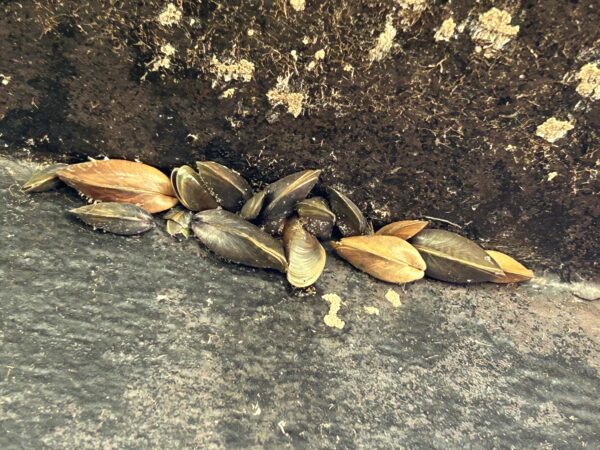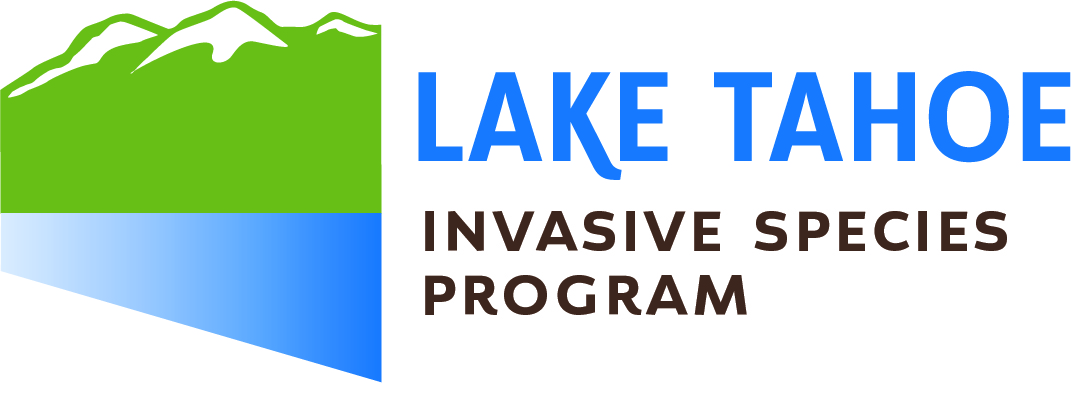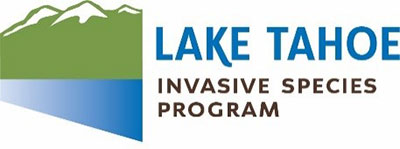Threat of golden mussels prompts mandatory decontaminations
Media Contact: Jeff Cowen | 775-589-5278
Inspection Program Contact: [email protected] | 888-824-6267
Lake Tahoe, Nev./Calif. – Lake Tahoe watercraft inspection stations, boat launches, and marinas are opening for the 2025 boating season and aquatic invasive species management agencies are encouraging boaters and paddlers to stay up to date with strengthened procedures to protect the lake from the spread of aquatic invasive species. Changes this year include mandatory decontaminations and additional processing time for motorized boats traveling from other areas, as well as more roving non-motorized inspectors at popular recreation areas.
As of May 3, all three regional watercraft inspection stations, at Meyers, Calif., Spooner Summit, Nev., and Alpine Meadows, Calif., are open daily from 8:30 a.m. to 5:30 p.m. Due to longer inspection times, boaters are encouraged to take advantage of the optional appointment system, at TahoeBoatInspections.com/appt. Walk-ins and appointments are accepted until 4:30 p.m. to allow adequate time for decontamination.
The Tahoe Regional Planning Agency (TRPA) and Tahoe Resource Conservation District (Tahoe RCD), which manage the Lake Tahoe Watercraft Inspection Program, have enacted the mandatory decontaminations in response to the discovery of invasive golden mussels in the Sacramento-San Joaquin Delta of California, just a few hours from Lake Tahoe.
The discovery last year of golden mussels in California is the first known occurrence of the new invader in North America. The small, yellowish-brown shellfish can reproduce rapidly in a range of habitats. If introduced, golden mussels would irreversibly harm Lake Tahoe’s recreation, water quality, and native ecosystem. Boaters should also be aware of varying restrictions throughout California waterways.
The Lake Tahoe Watercraft Inspection Program is unique in the nation because inspections of motorized watercraft have been mandatory since the program began in 2008. Decontaminations have only been required for vessels coming from high-risk waterbodies or those that did not arrive Clean, Drained, and Dry with mud, water, or invasive species onboard.
“We know the Lake Tahoe inspection program works and the move to mandatory decontaminations is a critical step to continue protecting the waters of the Tahoe Region for all to enjoy,” TRPA Aquatic Invasive Species Program Manager Thomas Boos said. “With the support of boaters and paddlers, we have kept Lake Tahoe safe from many invasive species, but golden mussel biology and their proximity to Tahoe make them a greater threat than other aquatic invasive species.”

Golden mussels detected on a boat traveling from the Sacramento-San Joaquin Delta to Lake Berryessa. Under new California requirements, the vessel was denied launch. Credit: Solano County Water Agency
Arrive Clean, Drained, and Dry to save time and money
In addition to standard Tahoe AIS sticker fees, boaters can expect a minimum decontamination fee of $30 for all visiting motorized watercraft. Arriving Clean, Drained, and Dry can limit time at the inspection station and help avoid increased decontamination fees.
As always, boats that have an intact Tahoe inspection seal from the last time they were hauled out of Lake Tahoe can launch again without reinspection. Fallen Leaf Lake and Echo Lakes have similar requirements and boats traveling from Lake Tahoe to those lakes will be subject to reinspection and decontamination fees.
Prepare for Decontamination: Tips for Boaters
- Estimate the cost for inspection and decontamination here.
- Arrive Clean, Drained, and Dry to minimize fees and time spent at the station.
- Make an appointment at TahoeBoatInspections.com/appt to get on the water faster.
- Stay abreast of California-wide restrictions at dbw.parks.ca.gov/inspections.
- Download the free Tahoe Boating App at tahoeboating.org for an interactive map that shows location relative to the existing New Zealand mudsnail infestation, as well as no-wake zones, area attractions, bathrooms, and more.
Paddlers, kayakers, and anglers must stay vigilant to protect Lake Tahoe by becoming a Tahoe Keeper. Golden mussels are not in Lake Tahoe, and following Clean, Drain, Dry protocols will reduce the risk of introduction. Visit TahoeKeepers.org to watch the training video and become a certified Tahoe Keeper.
Protect Lake Tahoe: Tips for Kayakers, Paddleboarders, Anglers, and Beachgoers
- Be vigilant about the Clean, Drain, Dry protocol.
- Learn how to self-inspect your gear and become a Tahoe Keeper. New and existing registered Tahoe Keepers can opt in to the 2025 Eyes on the Lake x Tahoe Keepers Chance to Win.
- Bring your nonmotorized gear to the inspection stations for free, expedited inspection and decontamination after paddling in infested waters.
- Utilize mobile, solar-powered “CD3” cleaning stations for kayaks, paddleboards, and canoes at popular recreation sites around the Tahoe Basin, provided by the League to Save Lake Tahoe and Nevada Division of State Lands.
- Chat with roving inspectors at popular beaches and launch ramps this summer, funded by the Tahoe Fund and TRPA.
For access to boating information, the appointment system, fees, or Clean, Drain, Dry protocols, visit TahoeBoatInspections.com. For inspections and program information, contact [email protected] or 888-824-6267.
###
 The Lake Tahoe Aquatic Invasive Species Program is implemented by 40 public and private partner organizations, including federal, state, and local jurisdictions, research partners, public utility districts, and private marinas. The Tahoe Regional Planning Agency and the Tahoe Resource Conservation District lead the program in collaboration with the public and private partners. The program’s mission is to prevent, detect, and control aquatic invasive species in the Region so that future generations can enjoy Lake Tahoe. For media inquiries, contact Jeff Cowen, TRPA Public Information Officer, at 775-589-5278.
The Lake Tahoe Aquatic Invasive Species Program is implemented by 40 public and private partner organizations, including federal, state, and local jurisdictions, research partners, public utility districts, and private marinas. The Tahoe Regional Planning Agency and the Tahoe Resource Conservation District lead the program in collaboration with the public and private partners. The program’s mission is to prevent, detect, and control aquatic invasive species in the Region so that future generations can enjoy Lake Tahoe. For media inquiries, contact Jeff Cowen, TRPA Public Information Officer, at 775-589-5278.
